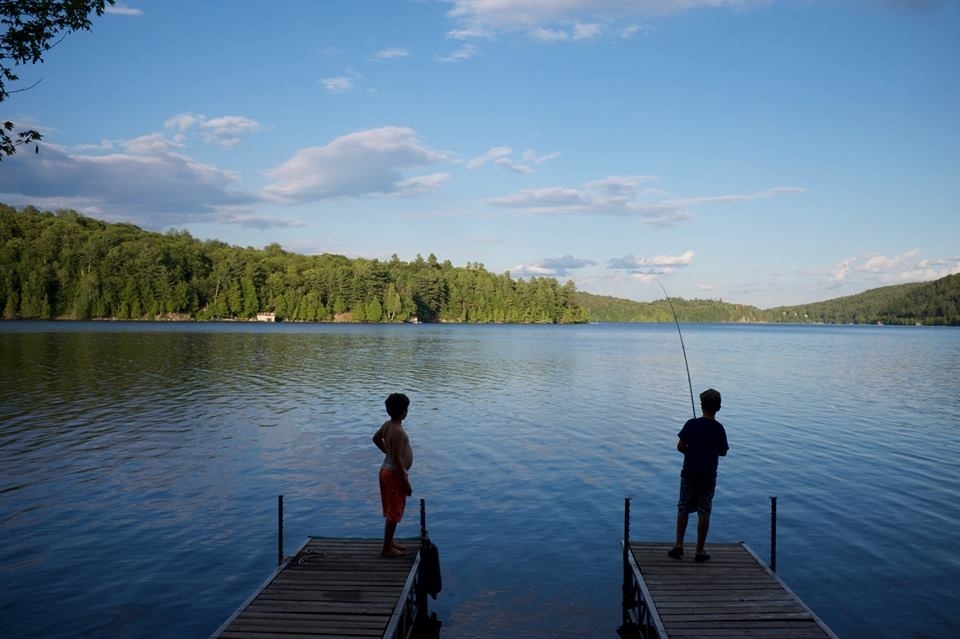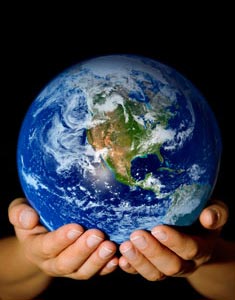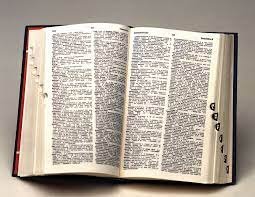
My writings - and those of others.
Meanings
We used to say “climate change” - a fairly unemotional term that didn’t suggest much beyond differences in weather in different locations. Many of us were even hard pressed to know the difference between weather and climate,- including a certain defeated president - but then the media shifted to “global warming”. What we are hearing more often lately are words like “emergency” and “catastrophe” - and rightly so. We need to feel threatened if we intend to do something about it.
Remember “greenhouse effect”? We don’t hear that one any more. Linguists like Todd Ehresmann at Babbel, which checks word usage, points out that “Global Heating” would get our attention as an accurate description now. Activists have helped increase the intensity of the language. That’s helpful because scientists are often cautious knowing the media will exaggerate their claims to sell products through fear - not to arouse the best in us. It’s good that activists lobby for the proper degree of accuracy - and that media watchers like Babbel ensure that we take responsibility for the changes that are happening.
Teachers
It is quite wonderful to discover an interesting character in a novel and then find that it is based upon the life of a real person. In this case it is Suzanne Simard, who appears in Richard Power’s The Overstory.
What she has discovered after years of forest research, and its dismissal by other scientists, is that trees in a forest, like people, have relationships - and one tree may act as a protector of other younger ones. We can learn from the forest’s wisdom. We know that people use networks; what she has found is that there are similar patterns in the plant world. In the same way that thoughts and feelings are hidden within our unconscious, there are similar ones in the plant world unseen and underground.
I’ll le her speak for herself here:
Playing with Words
As I wait for the final results of COP 26, I have to find something else to write about to end the week. I am taking a course online and the subject yesterday was “Interiority” - not a word that I ever use. That sent me on a search which I posted on the course site - and I’ll share something of it here:
I'm going to have some fun with words. I became curious about the term, "interiority", because before starting the course - or perhaps before reading Thomas Berry - it was not part of my everyday vocabulary. Canadians, like me, straddle both British and American English. I started with the hard copy of my Concise Oxford Dictionary published in 1982. The word wasn't there. I moved on to Collins British dictionary online to find this: "the quality of being focused on one's inner life and identity". If the Oxford English Dictionary had allowed me to see when the word first entered the language, I would have gone there, but there is a paywall. Collins did help with a diagram. It showed brief use for the first time in 1778 - 0.07% - and then the word languished or fell off completely until 1978 when it took off at 0.33% use. But that’s not a very big number either.
I moved on to the American Merriam-Webster. It had this to say: Definition of interiority
1: interior quality or character
2: inner life or substance : psychological existence
When we are little kids, using big words gives us a sense of authority and superiority - and it also makes us part of an in-group. For me, one of the challenges of Berry’s New Story - is telling it in words that other people understand. "Story" is a simpler word. For more fun, I went back to Collins and tried translating story into French, German and Italian. In each case it brings up a native word in the language histoire, Geschichte, storia. When I tried the same thing with Interiority, this is what came up - intériorité, Innerlichkeit, Interiorità. The German seemed to have a better word of their own. The others sounded as though they adopted the English one.
When we watched Robin Wall Kimmerer this week, several in the course commented on her warmth and simplicity as it comes through in the sound of her voice and her demeanor. It's isn't as though she can't use big words when she chooses to. I've just finished two of her books, Gathering Moss and Braiding Sweetgrass. Her naming of mosses reveals a scholar who can joust with any biologist and win hands down. For me, interiority has a cold and rather scientific sound - like an empty and sparsely furnished room. But this playful research brought a phrase that I can work with - "inner life" - because it sounds as though it comes from the wisdom of the heart. It still combines an adjective and a noun. To spur myself and others to act, I have to turn a phrase into a verb. The video for this section of the course on the global brain with the outline of the human body is also a big help in showing us what it means to live - both inside and outside our skins.
A good teacher once heard a student say, "I feel very creative". The teacher asked "So what are you going to create?" "Oh I didn't mean that I was going to do anything about it. It's just how I feel today".
That's why I never use the word "creativity" either. But "create" is a verb I like.
Roles
Though all the news is focused on COP26 today, I’m going to back up to an article in the Globe and Mail this past Saturday which has some important implications for all who write and read. Viviane Fairbank, in her essay, An Inconvenient Truth, argues that we have to review what science is and does and how those who write and read about it need to respond.
She starts by looking at the relationship of weather events and climate models, Most of us are aware of weather - especially when it affects us directly. I live in an old apartment building which is too hot indoors and have to check the temperature outside before I leave it because there can be large differences. We also are aware of disasters like heat and fire in Lytton BC, referenced yesterday by the Canadian Prime Minister at the climate conference. Our common understanding of climate is regional or seasonal. The author makes the case that the understanding of scientists and their models is a different one, spurred on exponentially now with the advantages provided by super computers. When they try to connect the two, weather events and climate change - they speculate about event attribution - how changes in climate might have an effect on specific events. They look at long term patterns of 30 years or more and combine findings from land, sea and ice and even more.
Journalists like event attribution because they think it will influence our behaviour. The scientists are less willing to go there quickly, even though they know it can have a positive effect. Not all scientists agree about the models and this is where trouble can start and it relates to the readers’ understanding of science - usually gained from our high school study experience. It showed up as well during COVID19 when changing reports suggested to some that the news must be fake. Any uncertainty around climate change being caused by humans gives opportunities to discredit findings and allows those benefiting from fossil fuels to sow distrust of all science.
Fairbank takes us back to high school. but before that she deals with the question of whether science is seen as objective - an argument we frequently hear. Science itself is in the midst of a battle about that. There is also a danger that we simply accept the science that lines up with our current beliefs. We underestimate the power of tweets. Her estimate is that 25% of the ones denying climate change are produced by bots - software programs that perform automated, repetitive, pre-defined tasks. There are far more transmittals of skepticism that statements by professional scientists. Scientists become conservative in estimates to avoid being harassed with endless questions from journalists. That creates doubt.
Back to high school. We were told that scientists start with a hypothesis and then test it with experiments. If the results were consistent, the hypothesis was confirmed and became fact. Nevertheless scientists work in an explorative fashion. Research often does not produce conclusive results. That doesn’t prove it wrong so much as it reveals the complexity and need for continuous learning. The models have to be as good as possible. What makes the difference is time. If a model is consistent with what happens over a number of decades, it is safe to assume that there is a degree of accuracy. As time goes on there are also many more factors coming into play. Scientists take time to do their work and don’t make public statements lightly. That’s when the deniers pounce.
Fairbank quotes French philosopher of science Bruno Latour on scientific truth - “not by some world shaking fool-proof demonstration, but by the weaving together of thousands of tiny facts, reworked through modeling into a tissue of proofs that draw their robustness from the multiplicity of data, each piece of which remains obviously fragile”. Scientists are not value free. but their choices inform what they study and care about.
Both pandemics and climate change provoke strong reactions. The risks of a pandemic produced very different responses of acceptance and denial - but we learned pretty quickly what the consequences were. Five million deaths worldwide is both shocking and informative and the feedback has come pretty quickly. The risks of climate change are immense but longer term. Thomas Berry understood them well as early as 1978 when he commented, “The destiny of humans cannot be separated from the destiny of Earth.”
Preparatory Reading
With the Climate Change conference coming soon, I need to spend more time reading than writing. There are an attractive set of options pictured above recommended by Yale Climate Connections. You can read the reviews here.
And The Guardian has some useful definitions in a world of COP26 and you can find them here.






